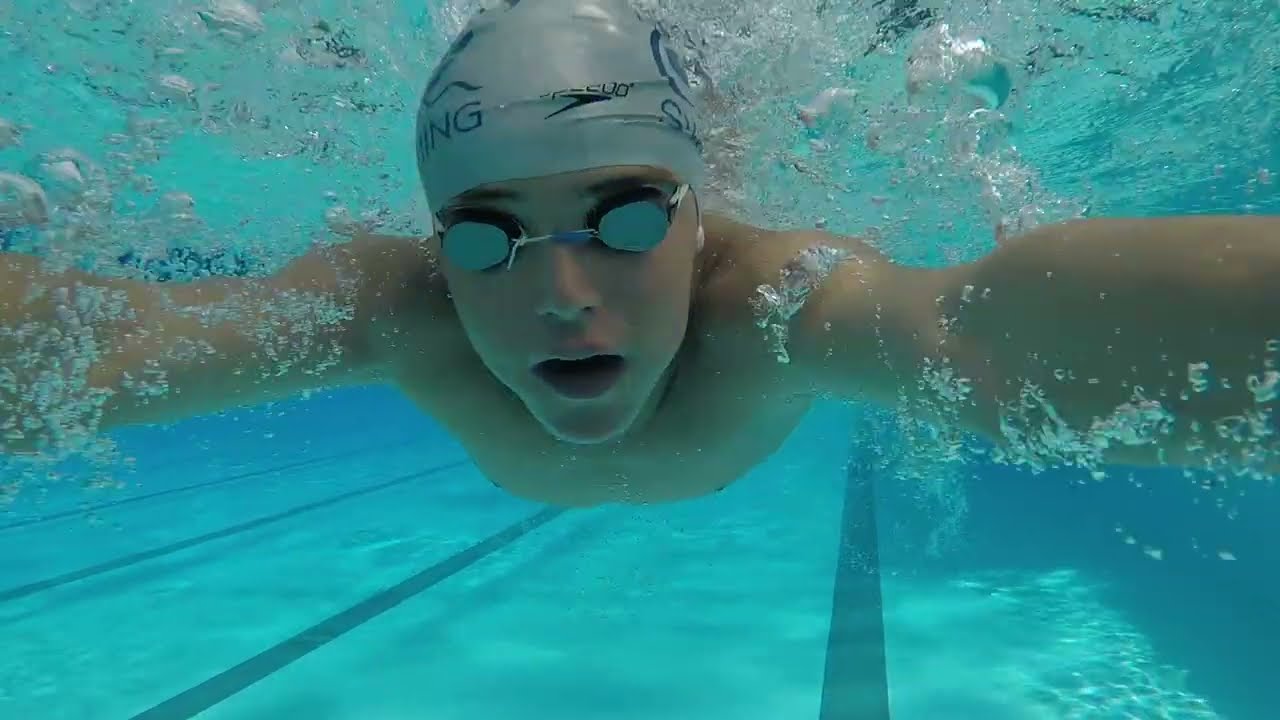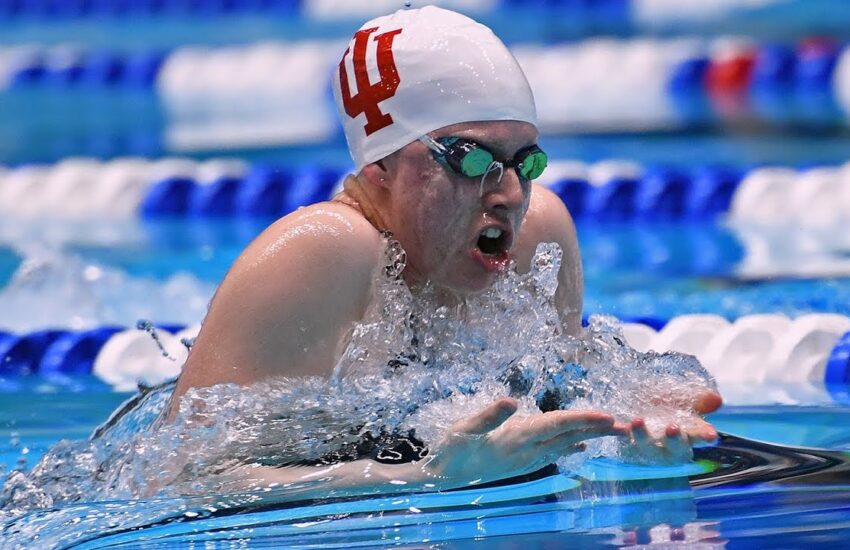How to swim butterfly?
The butterfly stroke is an interesting and challenging way to swim. This style uses virtually every muscle in the body, with the dominant muscles being the quads, pecs, hamstrings, glutes, lats, and deltoids. By learning this style, you will be able to strengthen muscles used for everyday activities such as lifting and walking. Once you have mastered the butterfly stroke, you can add it to your freestyle swimming routine.
Body motion
The body motion of the butterfly swim style is similar to the freestyle. The swimmer should maintain a low and parallel position with the water while simultaneously bringing their arms over in a circular motion. The arms should be tucked beneath the body to avoid tumbling and should be held over the water with elbows slightly higher than the hands. The arms should also be held over the water while the swimmer accelerates forward. Here are a few important points to remember when swimming the butterfly.
The most common mistake a swimmer makes when swimming the butterfly is to focus on the undulating motion of the body. This is a common mistake that causes swimmers to lose speed and efficiency. The goal of the butterfly swim is to move forward with as little drag as possible. The body motion of the butterfly should be similar to that of the breaststroke, which makes it more difficult to slow down. By using a combination of the two, the swimmer will be able to achieve better results, resulting in an efficient and smooth stroke.
A butterfly breath requires a swift completion and proper timing. The breath should be taken when the arms are about to exit the water. It is important to look straight while breathing so that you do not veer to one side. To improve the butterfly arm stroke, learn to imitate the dolphin or mermaid tail. The legs should be close together with toes pointed. The chest should be raised to create the undulation necessary for propulsion.
Breathing
When you’re swimming the butterfly, you’ll want to know the right breathing technique for your stroke. This can be achieved by breathing in through your nose, either every stroke or every other stroke. When you breathe every other stroke, your head lifts up once during the arm cycle and remains face down for the next. This allows you to exhale underwater as you swim, making the inhalation easier. One of the most common mistakes beginners make is failing to breathe properly.
The most important thing to remember is to never breathe too soon. Most swimmers breathe too late, and this will make them look like they’re diving. You want to breathe as soon as you get into the water and keep your head out of it. The same thing applies to the speed and the strength of your kick. You want your arms to be free to throw your arms forward after you’ve finished the stroke cycle. Try to breathe at the surface during the catch and the power phase, and keep your head in the water by mid-recovery.
One of the most common mistakes beginners make when swimming the butterfly is lifting their head too high during the pull phase. This causes their hips to drop, which creates drag and makes the stroke more energy-intensive. During the pull phase, swimmers breathe through their mouth, so they can focus on synchronizing their breathing and body undulation. The first kick should be smaller and more explosive, propelling the head out of the water. When you return to the surface, exhale while your head is underwater.
Leg action
The primary goal of the leg action in the butterfly is to propel the body forward. The leg starts in a flexed position with the top leg extended in front of the body and the lower leg extending behind the body with the toes pointed. The legs begin the positive action by pushing together near the midline of the body, and end the stroke together in a glide position. In addition to the legs, the head should be held in a relaxed position to allow free breathing during the stroking phase.
The kick should be powerful, and both legs should enter the water shoulder-width apart. This will ensure that the arms remain close to the body while allowing the palms to remain oriented correctly. The butterfly breath should be simultaneous and should be performed with a wave-like undulation of the whole body. As the arms exit the water, they should remain shoulder-width apart. Once in the water, the body should move with a strong undulation of the arms, legs, and head.
A good leg action should be effortless and uninterrupted. During the glide position, the feet drop to the water directly below the knees. The toes then point outward. During the recovery phase, the legs rotate to a hooked position, and the knees are stretched. The recovery phase should be smooth and effortless. This phase should occur at the end of the glide and not during the start of the next AP phase.
Recovery phase
When performing the butterfly stroke, one must pay attention to the recovery phase. It is very important to keep the wrist relaxed during this phase. The next phase is the catch. The catch phase begins when the arms are brought back to the hips. The swimmer should only push their arms back about one-third of the way. This allows them to breathe more easily enter the recovery phase. It is also important to maintain speed during the pull-push phase.
The catch phase is characterized by the swimmer raising their head to breathe while performing the push. Then they should let their head come back down underwater. During the push phase, the swimmer should breathe while looking straight ahead. When doing the catch-pull phase, the head must be lowered and repositioned on the surface. Each arm stroke should include two leg kicks. The legs should be moved up-and-down simultaneously along the vertical plane. The first leg kick should occur when the arms enter the water, and the second leg kick occurs at the end of the catch-pull phase.
The next phase of the butterfly is the recovery phase. The key is to keep your body streamlined and relaxed. The goal of this phase is to time the “release” of the opposing arm so that it will pull the blade and finish the stroke. In addition to this, swimmers should also lengthen their bodies from the head to their toes. This will help them maintain a balanced and long streamline position while swimming. They should also remember to stay balanced while swimming, so that they can easily get into the catching phase.
Technique
There are many techniques to learn when swimming butterfly. The butterfly swim stroke begins with the arms being spread out in front of you, and your body undulates as you breathe. Then you pull your arms underneath yourself in a ‘keyhole’ shape, pulling your body up with both legs together, toes pointed, and a downward kick. The butterfly swim stroke requires explosive breathing and timing your inward and outward kicks.
Before starting your butterfly stroke, tilt your head back and lift your face from the water. This will give you a head-up position, which will help with the arm stroke. You should also breathe every other stroke, or less often, depending on your skill level. If you do breathe too much, your arm stroke will end up being shorter than you anticipated. By focusing on the correct breathing technique, swimming the butterfly will become more efficient and enjoyable!
The butterfly stroke combines up and down movements that will help you develop your arm stroke and kick. The first kick should be taken as your arm stroke begins, while the second kick should be short and powerful. This helps you recover your arms forward, and improve your butterfly arm stroke. Another useful technique is the dolphin dive drill, which helps you work on your body undulation and your kick. These drills are an excellent way to learn how to swim butterfly.
Strengthening muscles
To improve your swimming technique, you can strengthen your muscles by performing specific exercises. To make your butterfly stroke easier, focus on exercises that target the primary muscle groups. One of these muscles is your rectus abdominis. A strong core is essential to perform certain swimming skills like the butterfly kick. Push-ups strengthen your rectus abdominis. Aside from pushing yourself in the water, push-ups also strengthen your abdominal muscles.
Abdominal muscles are essential for swimming any stroke. They help stabilize the back when it arches and lift the upper body and head out of the water. If you’re working on strengthening your abdominal muscles, PNF stretching exercises are a good way to start. By practicing PNF stretching, you can increase your flexibility while working on your butterfly technique. You’ll also strengthen your core and shoulders. And, don’t forget about your hands!
Another common problem in the butterfly stroke is a dropped elbow. The elbows fall below the wrists and the surface of the water early on in the pull. To avoid this, you should keep your elbows above your wrists and pointing outward, which will keep your arms energized. It’s also better to lead with the mass of your arms, instead of your elbows. And, you can strengthen these muscles by doing a lot of push-ups.


